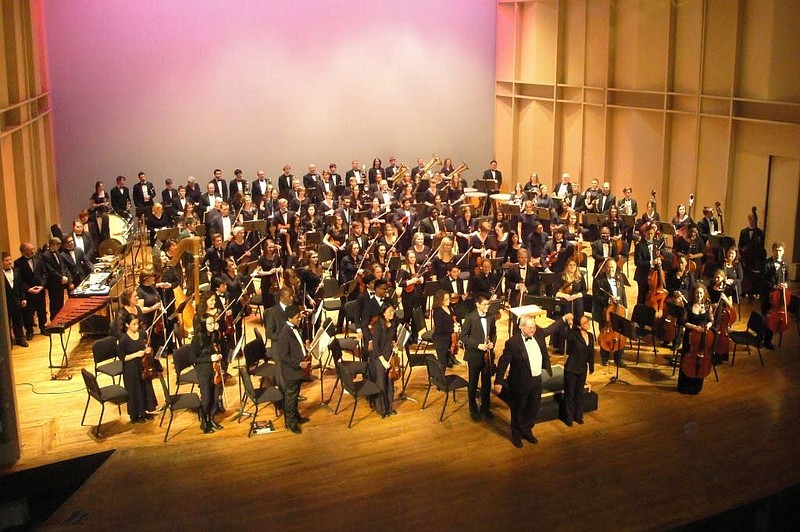The Chattanooga Symphony & Opera presented a highly engaging and well-balanced program of early 20th century music for chamber orchestra this evening at the Tivoli Theater. The featured work was Spanish composer Joaquin Rodrigo's entertaining second guitar concerto, Fantasia para un gentilhombre ('Fantasy for a Gentleman'). The eloquent and sensitive soloist was the award-winning Spanish guitarist, Pablo Villegas.
Nicely framing the concerto were two works by the more "cosmopolitan" composer, Igor Stravinsky. His Concerto in Eb (also known as "Dumbarton Oaks") opened the concert, and, after a brief intermission, the concert concluded with an outstanding performance of Stravinsky's elegant and energetic Pulcinella Suite, all under the steady leadership of Conductor Kayoko Dan.
A somewhat challenging work for both orchestra and audience, Dumbarton Oaks (completed in 1938) proved to be an interesting choice as a program opener; a kind of auditory palate-cleanser before the main course to follow (the crowd-pleasing Rodrigo work). One of the last works in Stravinsky's so-called "Neo-Classic," middle-period style, it was inspired by the music of 18th century composer, J.S. Bach. The musicians were especially effective in expressing the austere beauty of the slower, more lyrical second half of the second movement.
Stravinsky's effective use in this piece of astringent harmonies, irregular meter, and "rhythmic dissonance," cleverly transform the musical style of Bach into the distinct musical voice that is uniquely Stravinsky's own. This is music as much for the mind as it is for the heart, and it was a joy to hear the CSO perform it.
However, it was the guitar concerto, and especially the soloist, Pablo Villegas, that most in the audience came to hear. And, both soloist and orchestra delivered--big time! Composed at the request of virtuoso guitarist Andrés Segovia in 1954, Joaquin Rodrigo based the work on six short dances for solo guitar by the 17th century Spanish composer, Gaspar Sanz. Thoroughly engaging, even for first-time listeners, the work is full of charming tunes and captivating rhythms.
Most fascinating about Mr. Villegas' performance was his exceptionally creative and highly varied use of tone color and articulation. Rodrigo gives virtually no guidance to guitarists regarding this aspect of his composition, so it is entirely up to each individual performer to make these important interpretive decisions. From the full, resonant sound he produced in the 1st movement, to the brilliant and clearly articulated phrases of the "Fanfare for the Cavalry of Naples" in the 2nd movement, Mr. Villegas' choices brought the listener into a more complete understanding and appreciation of the work as a whole.
The unamplified acoustic guitar, for which this work was composed, is a much softer instrument than most of the instruments of the orchestra; especially the winds and brass, but also the string section, with multiple players per part. Maestra Dan very successfully achieved just the right balance that allowed the soloist to be clearly heard, while at the same time "loosening the reins," from time to time, thereby allowing the orchestra to acoustically move to the forefront. Particularly outstanding were the solo passages by Principal Trumpet, David Hobbs. The audience's ecstatic response brought Villegas back for two unaccompanied encores.
Closely based on the music of early 18th century Italian composer, Giovanni Pergolesi, Pulcinella Suite (composed in 1920/22) nonetheless bears Stravinsky unmistakable stamp. The orchestra performed this wonderful work with verve, commitment and confidence. The extraordinary and challenging double-bass solos were superbly performed by Principal Bass, Taylor Brown. Concertmaster, Holly Mulcahy played the solo violin passages with a controlled excitement and precision that was a pleasure to hear, and Principal Bassoon, Eric Anderson deftly negotiated the many prominent moments that Stravinsky wisely wrote for bassoon.
Douglas Hedwig was a trumpeter with the Metropolitan Opera Orchestra in New York City for 27 years and also was on the faculty of The Juilliard School. He is Professor Emeritus of Music at The City University of New York, and his musical compositions are published by Carl Fischer Music and TNR Music Publishers. He and his wife moved to Chattanooga in 2013.
